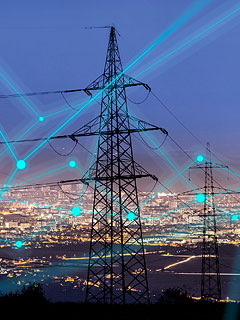GridNode Interconnection Protection Solutions
GE Vernova offers complete Network Interconnection protection based on System Integrity Protection Schemes (SIPS) solutions for Transmission utilities, and operators to protect the integrity of the interconnected network. These automated solutions with validated application function blocks provide the network real time actions for protecting interconnections and providing network operators with visibility and advanced notifications of impeding interconnected network separation.
Key Benefits
- Improves system stability – enables interconnection of two power systems for sharing of excess generation.
- Enhanced reliability – prevents instabilities from cascading to other parts of the interconnected networks.
- Enables more renewable energy integration – detects and prevents small signal oscillations associated with integration of these new energy resources.
Advantages of GE Vernova SIPS
- Automated network protection solutions
- Typically 250 millisecond response time
- Supports complex network topologies
- Notification to operator of SIPS actions
- Balances load vs generation upon disturbance situation
- Advanced visualization tools and HMI for operator interface
GridNode Interconnection Protection Solutions
GE Vernova offers complete Network Interconnection protection based on System Integrity Protection Schemes (SIPS) solutions for Transmission utilities, and operators to protect the integrity of the interconnected network. These automated solutions with validated application function blocks provide the network real time actions for protecting interconnections and providing network operators with visibility and advanced notifications of impeding interconnected network separation.
Key Benefits
- Improves system stability – enables interconnection of two power systems for sharing of excess generation.
- Enhanced reliability – prevents instabilities from cascading to other parts of the interconnected networks.
- Enables more renewable energy integration – detects and prevents small signal oscillations associated with integration of these new energy resources.
Advantages of GE Vernova SIPS
- Automated network protection solutions
- Typically 250 millisecond response time
- Supports complex network topologies
- Notification to operator of SIPS actions
- Balances load vs generation upon disturbance situation
- Advanced visualization tools and HMI for operator interface
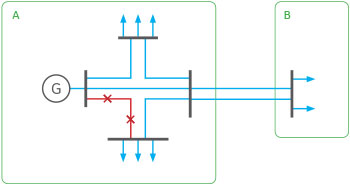 Network A interconnected with network B and sharing generation surplus
Network A interconnected with network B and sharing generation surplus
What are Network Interconnections
Grid Interconnections are found between:
- Two or more regions
- Two or more utilities within a region
- Two or more states or countries
Where one region will have generation surplus and other region may have generation shortfall – interconnecting maintains stability of both the regions
What is the need & growth of Network Interconnection
- Interconnecting two or more separate power systems improves stability in each system by helping the other balance generation and load.
- Both systems are now able to share generation and help the other serve load if they experience a generation shortfall.
- Another benefit of interconnection is to take advantage of lower cost generation sources.
- Renewable Energy projects are triggering more inter-connections.
GE Vernova's SIPS approach
GE Vernova offers two approaches for reducing instabilities and overloads on interconnected networks to provide safety and reliability to these networks. These approaches may be combined or used separately.
- Contingency action solutions
- Detection and dampening of system oscillations
What are customer challenges & customer objectives with respect to Network Interconnection
| Challenges | Outcome |
|---|---|
| Losing a major line in a network (A) can result in excess generation that may send too much generation and overload the interconnection. | Take contingency actions in network A to drop generation available to reduce exchanging of power to network B |
| Losing a major generation in a network (A) can result in lack of generation that may draw too much generation and overload the interconnection. | Take contingency actions in network A to shed load to reduce exchanging of power to network B |
| Large disturbances in a network can cascade to interconnected network causing inter-region oscillations which if grow big enough, can cause both networks to collapse | Detect interconnection oscillations and make attempts to dampen oscillations (trigger damping circuit, shed load, drop generation) or disconnect interconnection if oscillations persist or grow large enough |
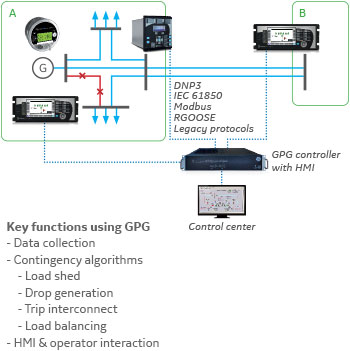 Intelligent monitoring devices put across the networks connected centrally to GridNode controller to execute contingency actions
Intelligent monitoring devices put across the networks connected centrally to GridNode controller to execute contingency actions
GE Vernova's contingency action solution detects a disturbance in one part of an interconnected network which could result in interconnection overloading or frequency and voltage stability conditions. GE Vernova’s solution will take action to remediate these situations by stabilizing the load and generation on the networks thereby protecting the interconnect.
Contingency Action Solutions
- Detect major changes in any of the connected networks (faults)
- Measure overload in interconnect and associated voltage and frequency changes
- Shed load to reduce load on interconnect
- Drop generation to reduce overvoltage
- Trip the interconnect
- Balancing the two networks
Key Characteristics
- Millisecond response time (typically under 250ms)
- Supports existing protection and metering devices and protocols
- Can support complex network topologies (i.e., mesh grids)
- Provide advanced notice of interconnection trip to operators
- Available customized HMI
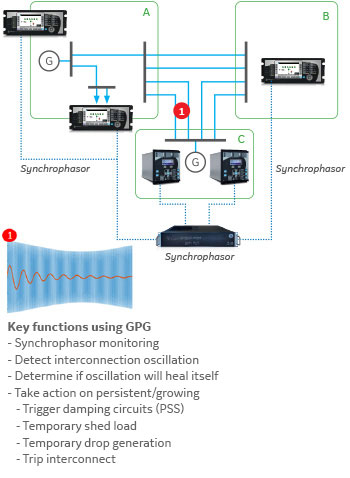 PMU's detecting oscillations are installed across the networks connected centrally to GridNode Controller to trigger dampening actions
PMU's detecting oscillations are installed across the networks connected centrally to GridNode Controller to trigger dampening actions
System oscillations* across an interconnect are caused by a major change (fault) in the connected networks and the associated sources are attempting to compensate to balance the load and generation. If oscillations persist local protections within a network will react to protect the asset and trip the generators offline.
Using synchrophasor, GE Vernova's system oscillation remediation solution detects network oscillations and determines if these will heal itself. When it is determined these oscillations will not heal itself, GE Vernova's solution will attempt to dampen the oscillations and if needed trip the interconnect.
Detection and dampening of system oscillations
- Detect prolonged/growing interconnect oscillations
- Trigger network damping circuits such as Power System Stabilizers (PSS) to dampen oscillations
- Temporary shed load to dampen large oscillations
- Temporary drop generation to dampen large oscillations
- Trip the interconnect
Key Characteristics
- Millisecond to second response time
- High speed situational awareness using synchrophasor
- Can support complex network topologies (i.e., mesh grids)
- Provide advanced notice of interconnection trip to operators
- Available customized HMI
*Both system (natural) and forced oscillations
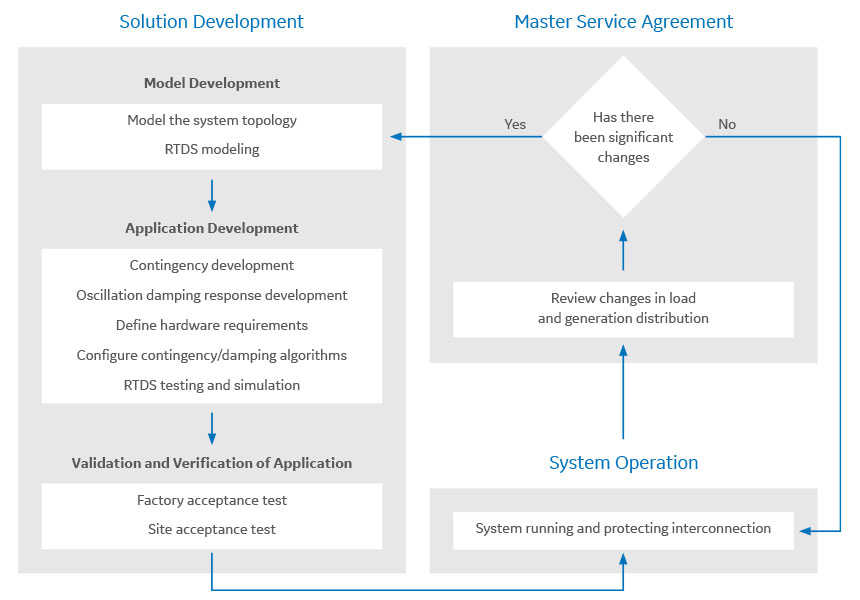
Measurement Equipment
Contingency action solution
- Protection Relays, Meters
- Protocols: DNP3, IEC 101/103, Modbus, RGOOSE/GOOSE, Synchrophasor C37.118-1, 61850
Detection and dampening of system oscillations
- Phasor Measurement Units
- Protection Relays with PMU capability
- Synchrophasor C37.118-1 protocol

Communications Equipment
Within a substation
- Ethernet switches
- Media/Protocol converters
Wide Area communications
- SONET multiplexers
- Ethernet backbone
- Wireless radios

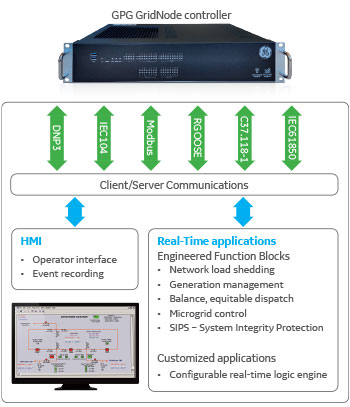
Example of interconnection between the grids using Oscillation Detection
- First of its interconnect between European grid which had a strong source and a Turkish grid which had a weak source.
- Due to these differences in the sources any major disturbance in the network will be slow to stabilize resulting in oscillations across the interconnect.
GE Vernova's oscillation detection solution monitors the active power flow between Turkey and Bulgaria/Greece.
Upon detection of the oscillation, GE Vernova solution will shed up to 1400MW of load across 15 substations located in Istanbul region to dampen the oscillations.
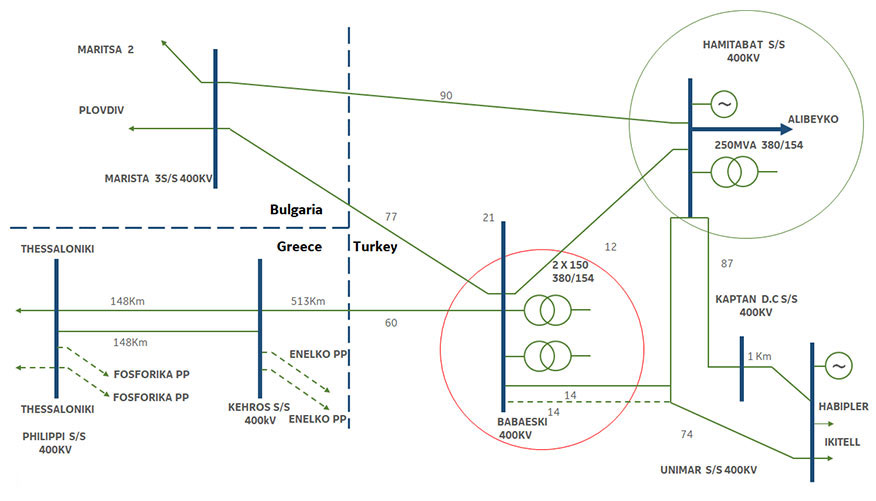 *European Network of Transmission System Operators for Electricity
*European Network of Transmission System Operators for Electricity
